Prices rise for 18 consecutive months

National home prices in Australia increased by 0.18% in June, setting a new peak despite the slowest monthly growth since December 2022, property data firm PropTrack has reported.
According to its latest Home Price Index, prices have risen by 10.14% from their December 2022 low and are up 3.14% year-to-date, standing 6.55% above June 2023 levels.
In the combined capital cities, price growth decelerated yet still rose by 0.22% to reach a new peak in June, marking a 6.91% year-on-year increase.
However, performance varied across different capitals due to differing conditions.
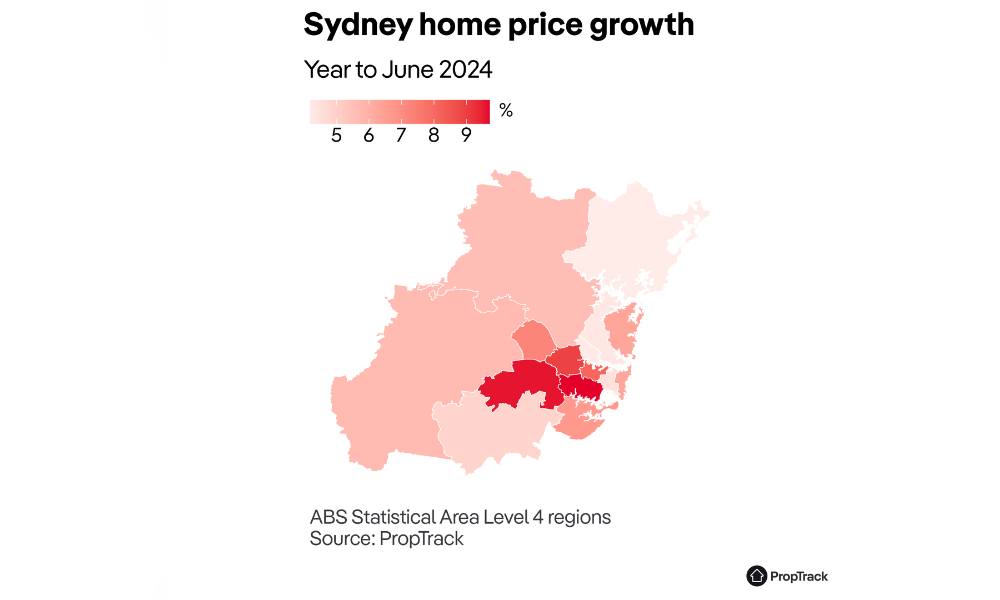
Price growth in Sydney has slowed over the past quarter, with home prices increasing by 0.41% in June, the slowest monthly growth since December 2023. Nevertheless, prices rose to a new peak, up 3.57% year-to-date, 6.39% above June 2023 levels, and 12.38% above their November 2022 low.
PropTrack said the increase in properties hitting the Sydney market this year has met strong demand, driving further price growth. However, the pace of growth has steadily eased since the end of the summer selling season, as buyers enjoy more options.
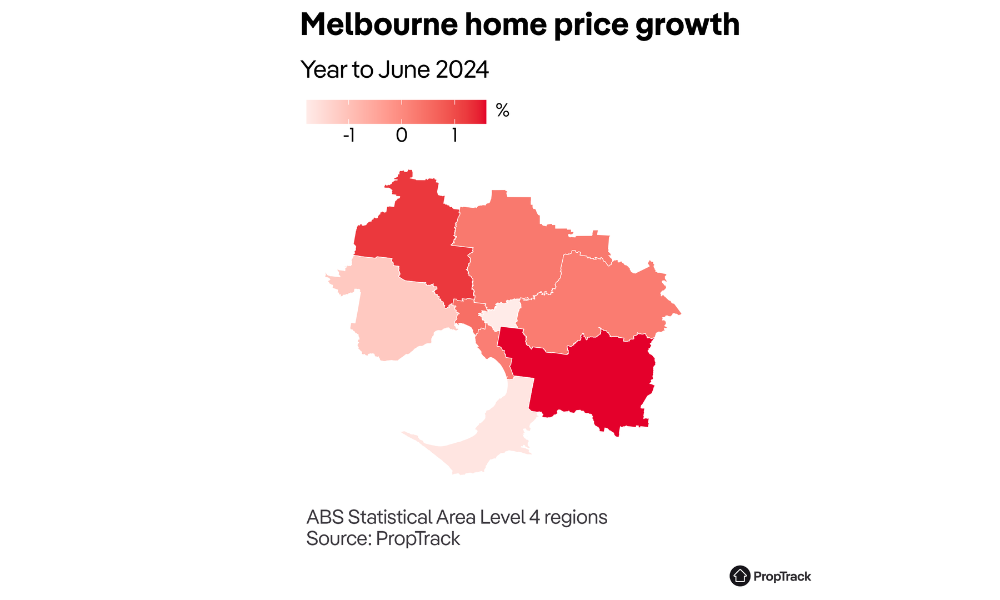
Melbourne home prices fell by 0.43% in June, marking a 0.07% decrease year-on-year. This represents the slowest pace of annual growth since July 2023, with prices remaining 3.89% below their March 2022 peak.
Price momentum in Melbourne is weaker as buyers consistently enjoy more choice relative to other markets. Additionally, construction rates relative to population growth in Victoria have been relatively balanced compared to other parts of the country.
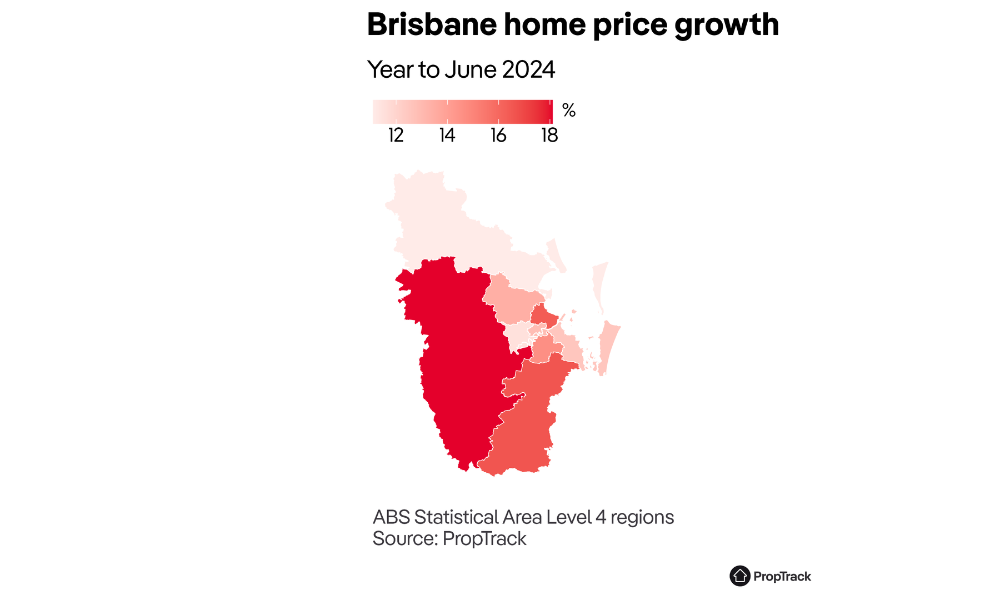
Brisbane has surpassed Canberra to remain the second most expensive capital following a period of consistently strong growth. Prices are now 19.96% above their December 2022 low, putting values ahead of Melbourne and Canberra.
Brisbane remains one of the strongest performing markets over the past year, with home prices now 14.14% above June 2023 levels. Prices lifted a further 0.50% in June, reaching a new peak, although the pace of growth is slowing compared to earlier in the year.
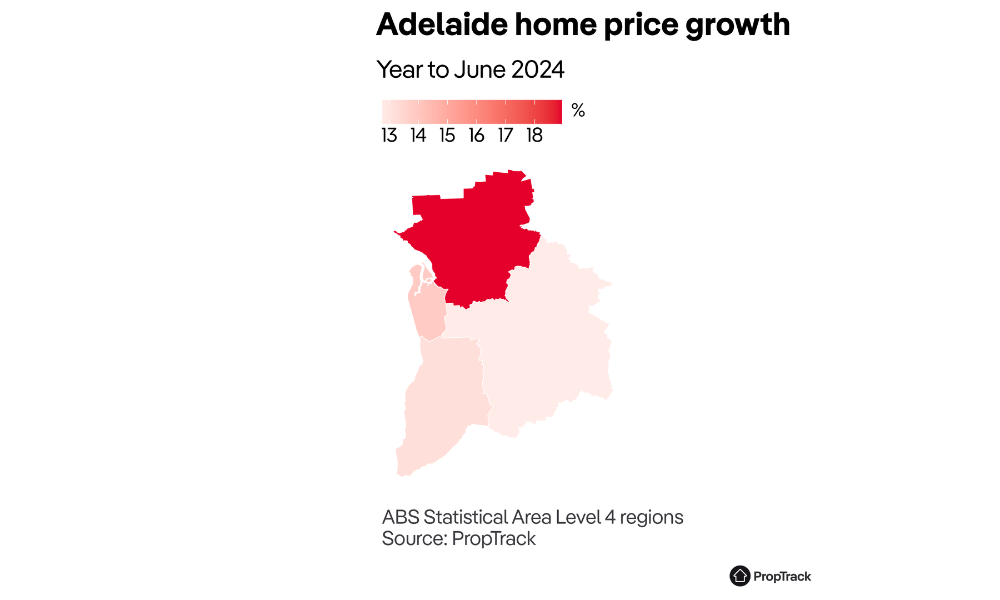
Adelaide remains one of the country’s top-performing markets, with home prices rising by 0.45% in June to reach a new peak, up 14.61% year-on-year.
The city’s comparative affordability, PropTrack said, has helped prices defy the significant increase in interest rates since May 2022. Low stock levels are also intensifying competition, contributing to the fast-paced rise in home prices over the past year. Despite the strong annual growth, monthly growth eased in June to the slowest pace since March 2023.
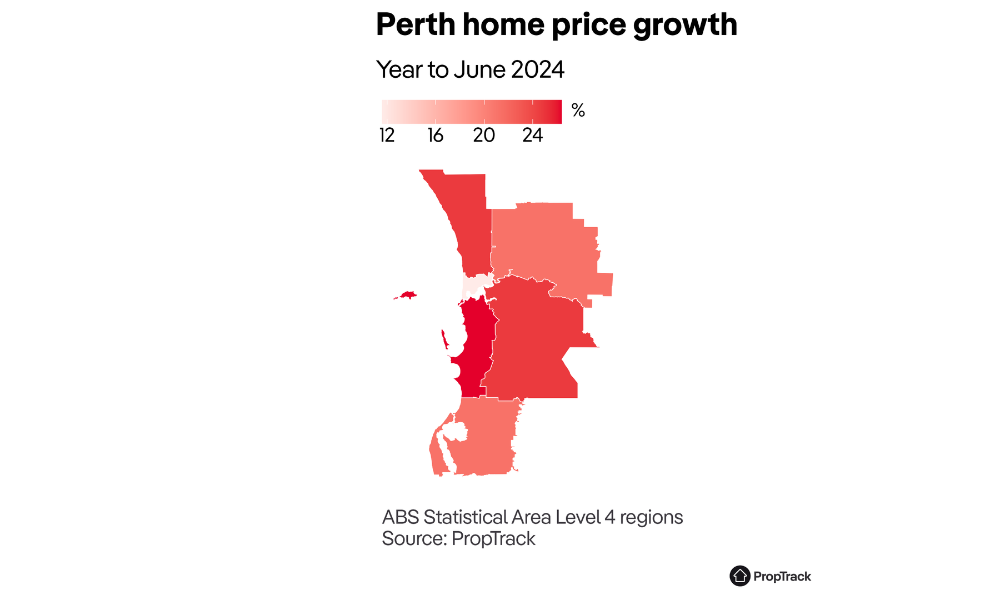
Perth has maintained its streak of relative outperformance, remaining the strongest market in the country for monthly (+0.65%) and annual (+22.52%) home price growth.
Tight supply amid strong buyer demand has created competitive conditions, fuelling significant price growth. The relative affordability of Perth’s homes, coupled with population growth and very tight rental markets, continues to support rising home values.
Overall, capital city prices have outpaced regional areas over the past year, continuing this trend in June despite slowing growth. Prices in the combined regions rose by 0.07%, standing 5.61% above June 2023 levels. Regional WA (+0.59%) and regional Queensland (+0.24%) led growth in June.
“National home prices have cycled through 18 consecutive months of growth to hit a fresh peak in June despite the pace of growth slowing as winter begins,” said Eleanor Creagh (pictured above), senior economist at PropTrack.
“Although the number of homes hitting the market this year has lifted, strong population growth, tight rental markets and home equity gains continue to bolster demand. Meanwhile, building activity remains challenged, resulting in the chronic shortage of housing being exacerbated by a lack of new construction.”
Creagh noted that interest rate stability has sustained buyer and seller confidence, while the continuous rise in home prices is motivating many to overcome affordability challenges and transact with the expectation of further growth.
“As a result, demand is outpacing supply, pushing prices and rents higher and offsetting the higher interest rate environment,” she said.
“From July, tax cuts will lift household incomes, increasing borrowing capacities and buyers’ budgets, further supporting price growth. Although home prices are expected to rise in the coming months, they will likely maintain a slower pace through the seasonally quieter winter period, particularly with increasing uncertainty around interest rates.”
Want to be regularly updated with mortgage news and features? Get exclusive interviews, breaking news, and industry events in your inbox – subscribe to our FREE daily newsletter. You can also follow us on Facebook, X (formerly Twitter), and LinkedIn.



